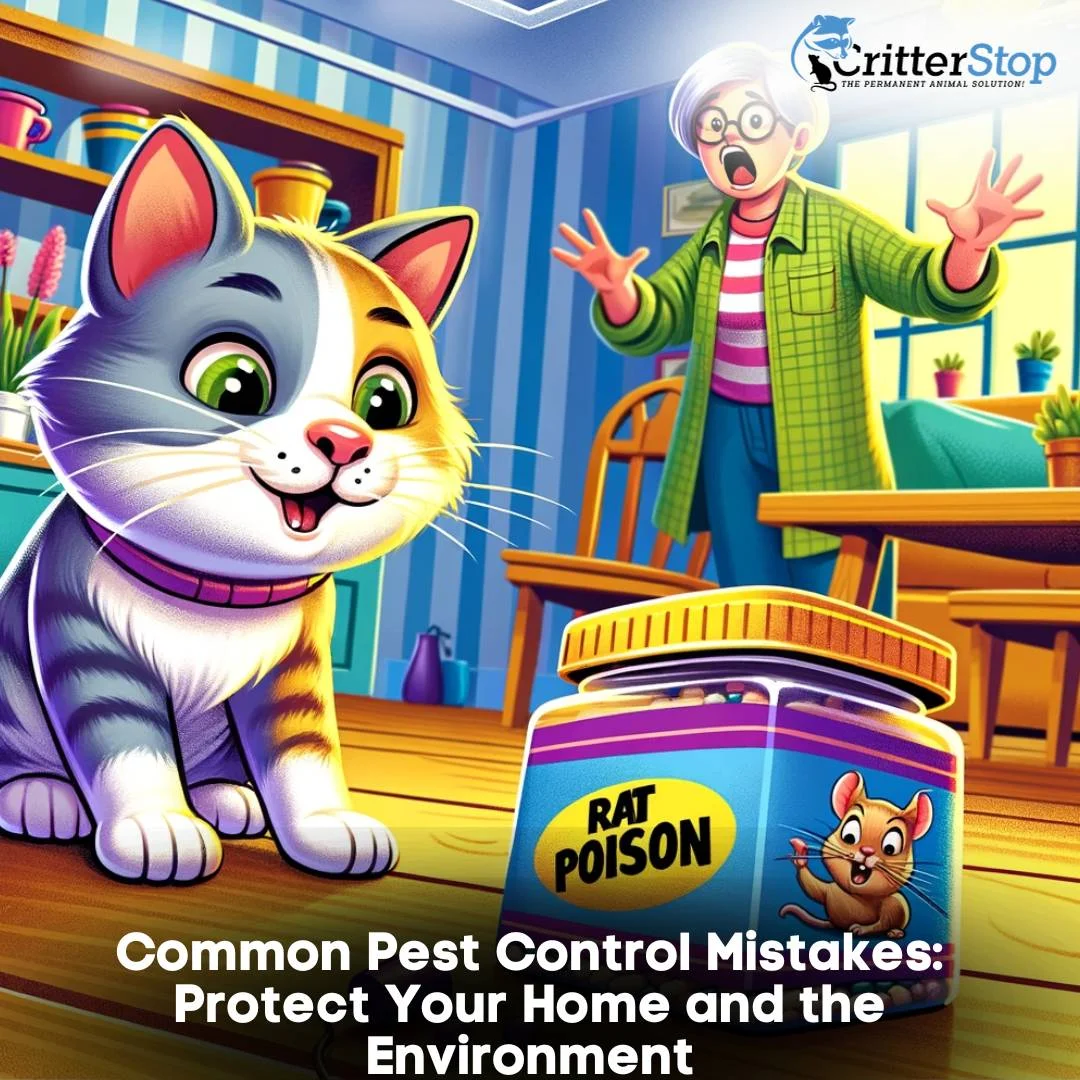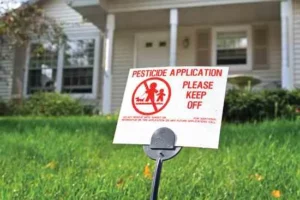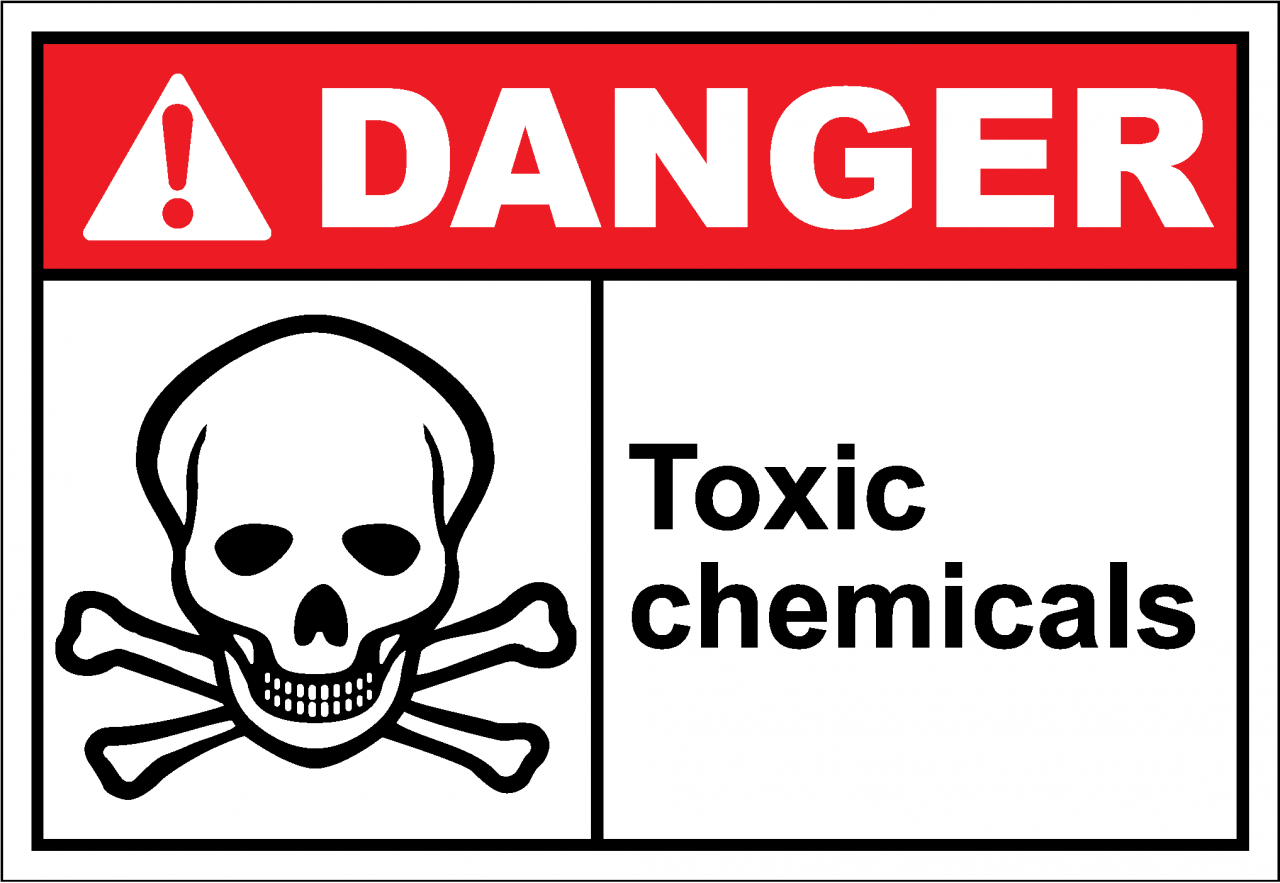
Pest control is an important aspect of maintaining a healthy and clean home environment. However, it is crucial to be mindful of the methods and products we use to tackle pest problems. Many common pest control mistakes not only harm the environment but also pose risks to our health and the well-being of wildlife. In this article, we will explore the environmental impact of chemicals in homes, eco-friendly alternatives for a chemical-free home, and the significance of state wildlife laws for protecting wildlife and local ecosystems.
Chemicals found in many pest control products can have far-reaching consequences on the environment. When these chemicals are used indoors, they can contaminate the air we breathe. Additionally, they can seep into the soil and groundwater, posing a threat to wildlife and ecosystems.
Chemicals used in homes for pest control can have a significant impact on the environment. These chemicals, known as pesticides, are designed to kill or repel pests such as insects, rodents, and weeds. However, their effects extend beyond their intended targets.
When pesticides are sprayed indoors, the tiny particles can become airborne and linger in the air for extended periods. This can lead to inhalation exposure for humans and pets, potentially causing respiratory issues and other health problems. Additionally, these chemicals can settle on surfaces, where they can be ingested or absorbed through the skin.

Once pesticides are used, they can also find their way into the environment through various pathways. Rainwater can wash the chemicals off treated surfaces and carry them into nearby soil and water sources. From there, they can contaminate groundwater, rivers, and lakes, affecting aquatic life and the organisms that rely on these habitats.
Household chemicals, such as pesticides, herbicides, and rodenticides, contain harmful ingredients that are toxic to pests. However, these ingredients can also be harmful to humans and non-targeted organisms. Pets and children, in particular, are vulnerable to the risks associated with exposure to these chemicals.
Children, with their developing bodies and immune systems, are more susceptible to the adverse effects of pesticide exposure. Studies have shown that children exposed to pesticides may experience developmental delays, cognitive impairments, and an increased risk of certain cancers.
Pets, too, are at risk when exposed to household chemicals. Dogs and cats can accidentally ingest pesticides by licking their paws or fur after walking on treated surfaces. This can lead to poisoning, gastrointestinal issues, and even organ damage.
Furthermore, chemicals can accumulate in the environment over time, leading to long-term damage. They can disrupt the natural balance of ecosystems and harm beneficial organisms that play a crucial role in maintaining ecological stability.
For example, bees and other pollinators are essential for the reproduction of many plants. However, exposure to pesticides can weaken their immune systems, impair their navigation abilities, and even cause death. This has serious implications for the pollination of crops and the overall health of ecosystems.

Fortunately, there are plenty of eco-friendly alternatives to consider when it comes to pest control. One effective approach is integrated pest management (IPM), which focuses on prevention and uses non-chemical methods to minimize pests.
Integrated pest management involves identifying the root causes of pest problems and implementing strategies to address them. This can include sealing cracks and openings to prevent pests from entering the home, installing screens on windows and doors to keep insects out, and maintaining cleanliness and hygiene to eliminate food sources for pests.
In addition to these preventive measures, there are various natural and non-toxic pest control methods available. For example, using essential oils such as peppermint or lavender can repel insects without harming them. Traps can also be used to catch pests, allowing for their safe removal without the use of chemicals.
By opting for these eco-friendly alternatives, we can protect our homes from pests without compromising the health of our environment. Not only do these methods reduce the risks associated with chemical exposure, but they also promote a more sustainable and balanced approach to pest management.
Wildlife plays a crucial role in maintaining a balanced ecosystem. State wildlife laws are in place to protect wildlife and their habitats from human activities that can have detrimental effects. Understanding and respecting these laws is essential for preserving biodiversity and promoting sustainable practices.

When it comes to safeguarding local ecosystems, state wildlife laws are the first line of defense. These laws are designed to regulate hunting, fishing, and other activities that may impact wildlife populations. By establishing bag limits, hunting seasons, and protected areas, these laws ensure that wildlife populations are sustainable and not overexploited.
But state wildlife laws go beyond just regulating human activities. They also prioritize the habitats of endangered and threatened species, granting them legal protection. These laws recognize the importance of conserving these habitats, as they are the lifelines for many vulnerable species. By preserving these habitats, we preserve the biodiversity that is essential for the overall health of ecosystems.
State wildlife laws play a crucial role in maintaining the delicate balance of local ecosystems. By regulating hunting and fishing, these laws prevent the overharvesting of wildlife, ensuring that populations can thrive and fulfill their ecological roles.
Bag limits, for example, are set to ensure that hunters and anglers do not take more animals than the population can sustain. These limits are carefully calculated based on scientific data and population assessments. By adhering to these limits, hunters and anglers contribute to the long-term sustainability of wildlife populations.
Hunting seasons are another important aspect of state wildlife laws. These seasons are carefully timed to coincide with the natural cycles of wildlife reproduction and migration. By allowing hunting only during specific times, state wildlife laws ensure that animals have the opportunity to breed and replenish their populations without excessive disturbance.
Protected areas are also established under state wildlife laws to provide safe havens for wildlife. These areas are designated as off-limits to hunting and other activities that may disturb or harm wildlife. By creating these protected areas, state wildlife laws ensure that critical habitats remain undisturbed, allowing species to thrive and maintain healthy populations.
While state wildlife laws play a crucial role in wildlife conservation, individuals can also make a significant impact on preserving local wildlife populations. There are several simple ways we can contribute to wildlife preservation in our local areas.
One way is by supporting wildlife-friendly practices. Planting native plants in our gardens, for example, can create vital habitats for a variety of species. Native plants provide food and shelter for wildlife, attracting birds, butterflies, and other beneficial insects. By incorporating native plants into our landscapes, we can help create a network of interconnected habitats that support a diverse range of wildlife.
Providing access to clean water sources is another important way to support wildlife. Installing bird baths, ponds, or other water features can provide a reliable water source for birds, mammals, and amphibians. These water sources are especially crucial during dry periods when natural water sources may become scarce. By ensuring that wildlife has access to clean water, we can help them survive and thrive in our local areas.
Furthermore, getting involved in local conservation organizations can make a significant impact on wildlife preservation. Volunteering your time and skills can help these organizations carry out important conservation projects, such as habitat restoration and wildlife monitoring. Additionally, participating in citizen science projects allows individuals to contribute valuable data that scientists can use to better understand and protect wildlife populations.
Advocacy is another powerful way to make a positive impact on local wildlife populations. By raising awareness about the importance of wildlife conservation, we can inspire others to take action. Writing letters to policymakers, attending public meetings, and supporting wildlife-friendly legislation are effective ways to advocate for wildlife conservation in our communities.
In conclusion, state wildlife laws are crucial for protecting wildlife and their habitats. By regulating human activities and prioritizing the conservation of endangered species and their habitats, these laws ensure the long-term sustainability of wildlife populations. However, individuals also have a role to play in wildlife preservation. By supporting wildlife-friendly practices, volunteering for local conservation organizations, participating in citizen science projects, and advocating for wildlife conservation, we can make a positive impact on local wildlife populations and contribute to the overall health of ecosystems.
Commitment plays a vital role in achieving success, whether it's in personal relationships or professional pursuits. Overcoming the fear of commitment and wholeheartedly embracing our goals can lead to personal growth and fulfillment.
Fear of commitment can stem from various factors, such as past experiences or a fear of failure. To overcome this fear, it is important to identify and address the underlying causes. Seeking support from loved ones or working with a therapist can provide valuable guidance in navigating this process.
Developing a clear vision of what we want to accomplish and breaking down our goals into manageable steps can also help in moving forward with confidence.
Wholehearted commitment allows us to channel our energy and focus towards achieving our goals. It instills a sense of purpose and determination, enabling us to overcome obstacles and make the necessary sacrifices along the way.
Add paragraph here
In both personal and professional settings, selecting the right partner is crucial for success. Whether it's a business partnership or a significant other, understanding red flags and considering key factors can lead to a successful and fulfilling relationship.
When entering a business partnership, it is essential to be aware of red flags that may indicate potential issues. These can include a lack of trust or communication, conflicting values or goals, and a history of unethical behavior. Recognizing these red flags early on can prevent future complications.
When seeking a provider for a service or product, it is important to consider several factors before making a commitment. These factors may include reputation, reliability, cost-effectiveness, and alignment with your goals or values. By conducting thorough research and vetting potential providers, you can establish a successful partnership built on trust and mutual benefit.